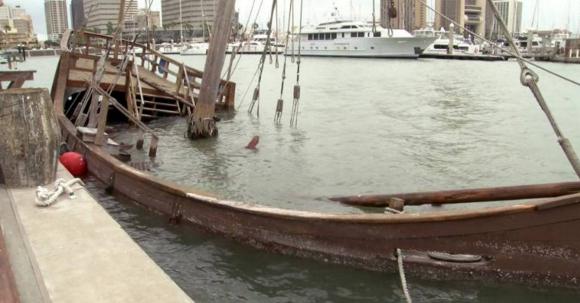 When Hurricane Harvey blew through the US Gulf coast in August 2017, the replica of Columbus’ Niña sank at the dock in Corpus Christie, Texas. Last Tuesday, the replica sank again. ABC Channel KSAT 12 quotes Kim Mrazek, president of the Columbus Sailing Association, which helps maintain the ship. “She sank fast, but she is a survivor.
When Hurricane Harvey blew through the US Gulf coast in August 2017, the replica of Columbus’ Niña sank at the dock in Corpus Christie, Texas. Last Tuesday, the replica sank again. ABC Channel KSAT 12 quotes Kim Mrazek, president of the Columbus Sailing Association, which helps maintain the ship. “She sank fast, but she is a survivor.
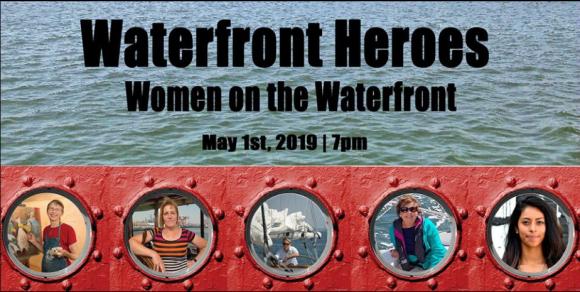 Next Wednesday, May 1, from 7:00 PM – 9:00 PM, the City Lore gallery in Manhattan is hosting Waterfront Heroes: Women on the Waterfront which will feature a panel discussion moderated by maritime journalist Betsy Haggerty. The panelists will include Fulton Fish Market painter Naima Rauam, Carolina Salguero, founder and director of PortSide NewYork, Jasmine Benitez, Public Programs Manager of Rocking the Boat, and Capt. Cait Field, captain with Classic Harbor Line.
Next Wednesday, May 1, from 7:00 PM – 9:00 PM, the City Lore gallery in Manhattan is hosting Waterfront Heroes: Women on the Waterfront which will feature a panel discussion moderated by maritime journalist Betsy Haggerty. The panelists will include Fulton Fish Market painter Naima Rauam, Carolina Salguero, founder and director of PortSide NewYork, Jasmine Benitez, Public Programs Manager of Rocking the Boat, and Capt. Cait Field, captain with Classic Harbor Line.
The panelists will describe their experiences working on and around New York’s 520 miles of coastline and Long Island’s 1600 miles of shoreline, and will answer questions from the audience. A reception will follow. Tickets are $5 and are available here. City Lore is at 56 East 1st Street, New York, NY 10003.
About the participants: Continue reading
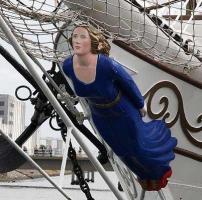 There has been a minor hub-bub of late over the decision by the Scottish Maritime Museum to use gender-neutral references to ships after vandals have scratched out references to “she” several times on museum displays. Putting aside the question of whether vandals are the best choice for dictating museum policies, the museum is not alone in moving to gender-neutral labeling for ships. Lloyd’s List, the more than 280-year-old publication has been referring to ships as “it” rather than as “she” since 2002.
There has been a minor hub-bub of late over the decision by the Scottish Maritime Museum to use gender-neutral references to ships after vandals have scratched out references to “she” several times on museum displays. Putting aside the question of whether vandals are the best choice for dictating museum policies, the museum is not alone in moving to gender-neutral labeling for ships. Lloyd’s List, the more than 280-year-old publication has been referring to ships as “it” rather than as “she” since 2002.
Not surprisingly, not everyone is happy with the change. The Telegraph reports that supporters of the museum expressed their dismay on social media. “This isn’t how it works. You don’t get to erase history, and like it or not ships have always been referred to as she,” said Jennifer Sorbara.
Well, maybe yes and maybe no. This may be true for English speakers but shipping is and has always been an international business. In other languages, ships can be he, she or it, sometimes both.
In 1919, the three-masted schooner William H. Sumner was wrecked on the North Carolina shore near New Topsail Inlet, after a mutiny by its crew. Since then the wreck has played hide and seek, disappearing beneath the sand and emerging again as the sands shift and drift. On Monday, the Town of Surf City posted on its Facebook page:
Mitsuhiro Iwamoto, 52, sailed 8,700-miles across the Pacific non-stop, becoming the first visually impaired person to do so. He was assisted by his sighted navigator, Doug Smith. The two left California in late February on a 12m (40 ft) sailboat and arrived in Fukushima on Saturday morning.
Fox News reports that when sailing, Iwamoto can still feel the wind direction and steer with sighted people’s help, but needs a guide like Smith to navigate around other boats, according to the Voice of San Diego. To work around his disability, he uses a vocalized GPS and audio compass. On the latest trip, Iwamoto steered the yacht and managed the sail, while Smith helped him with the equipment that shows wind direction.
Mitsuhiro Iwamoto first blind non-stop Pacific journey (Japan) – BBC News
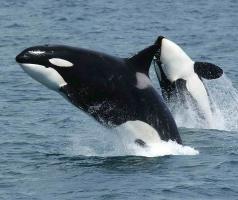 A study published in Nature’s Scientific Reports documents that as ferocious as great white sharks can be, even the great whites are afraid of transient orcas.
A study published in Nature’s Scientific Reports documents that as ferocious as great white sharks can be, even the great whites are afraid of transient orcas.
When the orcas swim by the Southeast Farallon Islands, off San Francisco, the great white sharks flee the area and often do not return for up to a year, even though the killer whales are typically just passing through. Both the sharks and the orcas feed on elephant seals indigenous to the Farallons. In addition to feasting on seals, the transient orcas have been known to attack and eat great while sharks. Rather than compete with the killer whales for the seals, and possibly end up as dinner themselves, the sharks choose another hunting ground.
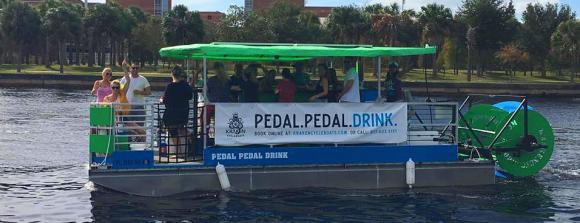
A Cycleboat in calm water.
A few years ago I was walking down a street in Austin Texas when I saw a group of folks sitting at a bar pedal by. Apparently, they were peddling a “Pedal Pub” on a PubCrawler tour. The Pedal Pub tour is advertised as traveling a “maximum speed is five miles per hour; just right for sharing good times with friends and drinking cold beverages as you pedal your way through downtown Austin!” Safe to say it was not what I expected to see, even in Austin. I have since learned that there are Pedal Pubs operating in 40 cities with 190 of these “Party Bikes” on the streets. Who knew?
I have recently learned of a waterborne version of the Pedal Pub called the Cycleboat. Instead of pedaling on streets, the pedaling passengers of a Cycleboat pedal a 24′ pontoon boat, turning a stern wheel to propel the craft through the water. The Cycleboats can accommodate between 14-16 passengers and are currently operating in bays, rivers, and lakes at 20 locations around the country. If the pedal-powered stern wheel doesn’t provide enough power, the boat also has a 30 hp gasoline outboard engine. Continue reading
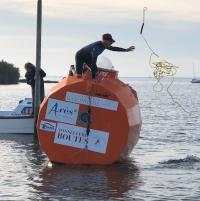 At the end of last December, we posted about the 72-year-old French adventurer Jean-Jacques Savin who set off to attempt to drift across the Atlantic in a large wooden barrel. He departed from El Hierro, one of the Canary Islands, west of Morocco, with the intention of drifting, carried by the winds and currents, across the Atlantic Ocean.
At the end of last December, we posted about the 72-year-old French adventurer Jean-Jacques Savin who set off to attempt to drift across the Atlantic in a large wooden barrel. He departed from El Hierro, one of the Canary Islands, west of Morocco, with the intention of drifting, carried by the winds and currents, across the Atlantic Ocean.
Now over 115 days into the crossing, Savin is reported to be in good spirits and to be, well, still drifting. He and his barrel have drifted over 2,500 nautical miles from the Canary Islands and are now within 400 – 1,000 miles of land, depending on which way the winds and currents take him.
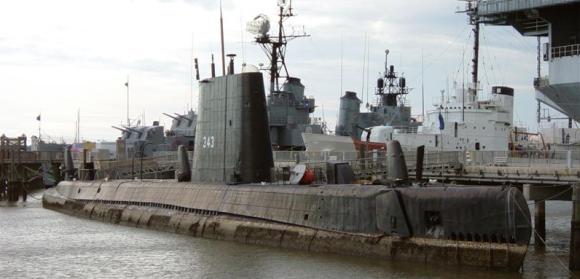 Recently, we posted about the planned sinking of the USS Clamagore as an artificial reef. The 1945 built Balao-class submarine has been an exhibit at the Patriots Point Naval & Maritime Museum in Charleston, SC since 1981, but the museum says that the submarine has become too costly to maintain. While the submarine may be expensive to maintain, sinking it as a reef is not cheap, either. Funding of $2.7 million has been set aside to strip the submarine Clamagore of all environmental pollutants.
Recently, we posted about the planned sinking of the USS Clamagore as an artificial reef. The 1945 built Balao-class submarine has been an exhibit at the Patriots Point Naval & Maritime Museum in Charleston, SC since 1981, but the museum says that the submarine has become too costly to maintain. While the submarine may be expensive to maintain, sinking it as a reef is not cheap, either. Funding of $2.7 million has been set aside to strip the submarine Clamagore of all environmental pollutants.
Now, a group of retired submariners is suing the museum to stop the reefing of the historic submarine, arguing that the museum lacks the authority to sink the sub and that they have a less costly proposal to save it.
Man at Sea is one of Alfred Dunhill’s ‘Portraits of Achievement‘. It is five years old, but new to me.
Man at Sea is an ode to the sea and one man’s life long passion for sailing on it, following Iain Percy OBE, British sailor and Olympic Champion. Setting sail from Lymington in the New Forest district of Hampshire in the yacht Strega, Iain tackles the wind and the waves on The Solent strait between the Isle of Wight and the mainland England.
“The boat suddenly becomes weightless and you’re surfing. You almost become mesmerised as you catch the next wave and the wave after”
– Iain Percy
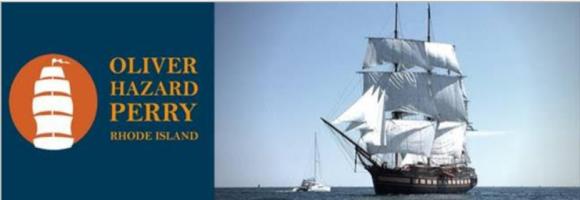 In February we posted that the tall ship Oliver Hazard Perry was entering drydock and that the mission and strategy of Oliver Hazard Perry Rhode Island (OHPRI), the organization operating the ship, was being reconsidered. Rather than focussing on distance sailing, Rhode Island’s Official Tall Ship would be used in year-round programming closer to home. OHPRI announced that the new operating model will pivot away from long offshore voyages that impact the fewest people at the greatest capital expense. Operations will consist of a mix of multi-day, single day and dockside programs, with underway voyages offered from late spring through mid-autumn.
In February we posted that the tall ship Oliver Hazard Perry was entering drydock and that the mission and strategy of Oliver Hazard Perry Rhode Island (OHPRI), the organization operating the ship, was being reconsidered. Rather than focussing on distance sailing, Rhode Island’s Official Tall Ship would be used in year-round programming closer to home. OHPRI announced that the new operating model will pivot away from long offshore voyages that impact the fewest people at the greatest capital expense. Operations will consist of a mix of multi-day, single day and dockside programs, with underway voyages offered from late spring through mid-autumn.
OHPRI wasted no time to test the concept of the new model. With the ship in winter shipyard layup, they provided a program of six days of hands-on experience to nine participants in the Rhode Island Marine Trade Association’s (RIMTA) Pre-Apprenticeship Program.” Continue reading
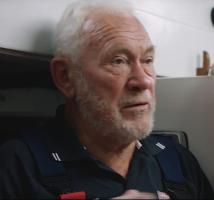 The News is reporting that Sir Robin Knox-Johnston is setting sail today from Portsmouth Harbour, heading to a celebratory tour of Falmouth, where he finished his record-setting voyage on April 22 in 1969, becoming the first person to sail non-stop single-handed around the globe. In doing so, he won Sunday Times Golden Globe Race as well as being the only sailor to finish.
The News is reporting that Sir Robin Knox-Johnston is setting sail today from Portsmouth Harbour, heading to a celebratory tour of Falmouth, where he finished his record-setting voyage on April 22 in 1969, becoming the first person to sail non-stop single-handed around the globe. In doing so, he won Sunday Times Golden Globe Race as well as being the only sailor to finish.
To celebrate the 50th anniversary of his accomplishment, Sir Robin, 80, will sail Suhaili, the 32-foot Bermudan ketch which he sailed around the world, across the original race finish line at Falmouth on Monday, April 22nd. He will be accompanied by Lively Lady, restored and sailed by Alan Priddy, and a supporting flotilla of yachts sailed by friends from the world of sailing.

Photo: Facebook/@watchdogthailandpage
Four workers on a drilling rig 135 miles off the coast of Thailand saw something completely unexpected in the ocean swimming toward the rig — a small brown dog. The dog successfully climbed onto a partially submerged strut on the rig. The workers spent the next quarter hour attempting to bring the shivering canine safely aboard the rig, operated by Chevron. Using ropes to harness the pooch, the four men succeeded in bringing the dog up to the deck, where they wrapped it in blankets and gave it food and water.
The drill rig workers named the new arrival Boonrod (survivor, or saved one). The dog apparently was in remarkably good shape, beyond being cold, tired, hungry and dehydrated.
How did a dog end up swimming in the ocean 135 miles offshore? Continue reading
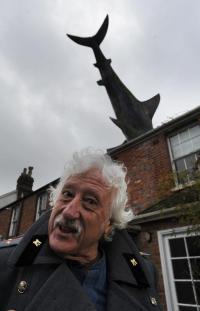 Bill Heine, journalist and radio presenter, who for many years, lived in the Headington suburb of Oxford, died of cancer earlier this month at the age of 74. He left behind his partner, Jane Hanson, and their son, Magnus, as well as a 25ft long fiberglass shark, protruding from the roof what was once his house.
Bill Heine, journalist and radio presenter, who for many years, lived in the Headington suburb of Oxford, died of cancer earlier this month at the age of 74. He left behind his partner, Jane Hanson, and their son, Magnus, as well as a 25ft long fiberglass shark, protruding from the roof what was once his house.
Twenty-seven years before the movie Sharknado sent sharks raining down on Los Angeles, California, a large shark appeared to have fallen from the sky in Headington and become stuck in the roof of a house on High Street.
Fortunately, it wasn’t a real shark. Continue reading
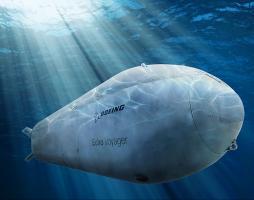 The US Navy has recently ordered four Orca Extra-Large Unmanned Underwater Vehicles (XLUUVs) from Boeing, in a contract worth $43 million. The Orca XLUUVs are very large diesel-electric drone submarines intended to gather intelligence, place or clear naval mines, attack other ships or submarines, conduct stand-off strikes, and more.
The US Navy has recently ordered four Orca Extra-Large Unmanned Underwater Vehicles (XLUUVs) from Boeing, in a contract worth $43 million. The Orca XLUUVs are very large diesel-electric drone submarines intended to gather intelligence, place or clear naval mines, attack other ships or submarines, conduct stand-off strikes, and more.
The Orca is a design based on the Boeing Echo Voyager demonstration submarine with a range of 6,500 nautical miles. The vessel measures 51 by 8.5 by 8.5 feet and has a dry weight of 50 tons. The Echo Voyager has a maximum speed of around eight knots underwater and can dive to depths up to 11,000 feet deep. Its batteries give it a range of more than 150 miles at a speed of around 3 knots before it needs to surface and use its air-breathing diesel generator to recharge. Boeing has said that Echo Voyager could carry enough fuel to allow it to operate autonomously for up to six months at a time. It has its own sonar-enabled obstacle avoidance system, as well as an inertial navigation system.
 The Working Harbor Committee of New York and New Jersey (WHC) will honor Captain James DeSimone at its 14th annual Gala Award Reception on Tuesday, May 14, from 6 p.m. to 8:30 p.m., at the Downtown Association, 60 Pine Street, New York. Captain DeSimone is deputy commissioner in the New York City Department of Transportation and Chief Operating Officer for the Staten Island Ferry. Click here for more information and for tickets.
The Working Harbor Committee of New York and New Jersey (WHC) will honor Captain James DeSimone at its 14th annual Gala Award Reception on Tuesday, May 14, from 6 p.m. to 8:30 p.m., at the Downtown Association, 60 Pine Street, New York. Captain DeSimone is deputy commissioner in the New York City Department of Transportation and Chief Operating Officer for the Staten Island Ferry. Click here for more information and for tickets.
 A post not about the sea, but about sailing on the ocean of light from the sun. The idea for solar sailing dates back to 1610, when Johannes Kepler observed that comet tails point away from the sun as if pushed by a celestial wind. In a letter to Galileo, he wrote, “Provide ships or sails adapted to the heavenly breezes, and there will be some who will brave even that void.”
A post not about the sea, but about sailing on the ocean of light from the sun. The idea for solar sailing dates back to 1610, when Johannes Kepler observed that comet tails point away from the sun as if pushed by a celestial wind. In a letter to Galileo, he wrote, “Provide ships or sails adapted to the heavenly breezes, and there will be some who will brave even that void.”
Back in 2014, we posted about The Planetary Society’s Lightsail project, an attempt to launch a solar sail which would be propelled by the momentum of photons of light radiating from the sun. Their first attempt with a prototype was largely successful and since the non-profit society has been raising money and arranging a launch window to send their 32-square-meter solar sail Lightsail 2 into orbit as a light propelled earth satellite. Lightsail 2 is expected to be launched sometime in 2019 aboard a Falcon Heavy rideshare mission called STP-2.
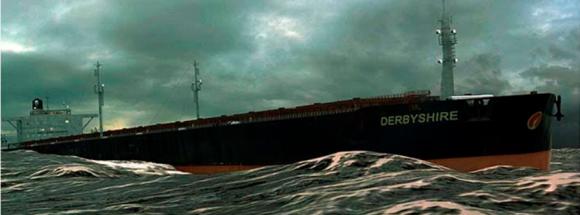
Originally published in gCaptain.com. Reposted with permission.
Discovery Channel (Canada)’s new documentary series, “Disasters at Sea,” premieres on April 16th at 10 PM ET. The first episode, “Trapped in Typhoon Alley,” looks at the mysterious sinking of the Capesize Ore/Bulk/Oiler MV Derbyshire, with the loss of 42 aboard, in Typhoon Orchid in 1980. To this day, the Derbyshire remains the largest British flagged ship ever to have been lost at sea. What happened to the mighty ship would be a perplexing mystery and the subject of considerable controversy for more than twenty years.
The disappearance of the MV Derbyshire in 1980 was a shock to many in the world of shipping. In the 1970s and 80s, bulk carriers were sinking at a rate one ship lost every three to six weeks, usually with the loss of all hands. Many of these bulkers were older, often literally worn-out, poorly maintained with ill-trained crews, and operated by fly-by-night owners.
The Derbyshire was not one of these ships. Continue reading
 On Wednesday, a federal judge decided to get Carnival Corp.‘s attention. U.S. District Judge Patricia Seitz said she is considering temporarily blocking the largest cruise corporation in the world from docking its ships at ports in the United States as punishment for a possible probation violation. A final decision will come in a hearing in June. The Miami Herald reports that Judge Seitz wants company chairman Micky Arison and president Donald Arnold to attend that hearing.
On Wednesday, a federal judge decided to get Carnival Corp.‘s attention. U.S. District Judge Patricia Seitz said she is considering temporarily blocking the largest cruise corporation in the world from docking its ships at ports in the United States as punishment for a possible probation violation. A final decision will come in a hearing in June. The Miami Herald reports that Judge Seitz wants company chairman Micky Arison and president Donald Arnold to attend that hearing.
“The people at the top are treating this as a gnat,” Judge Seitz said. “If I could, I would give all the members of the executive committee a visit to the detention center for a couple of days. It’s amazing how that helps people come to focus on reality.”
 For several years, there has been an ongoing discussion at the Patriots Point Naval & Maritime Museum about what to do with the World War II era, USS Clamagore. The 1945 built Balao-class submarine has been an exhibit at the museum in Charleston, SC since 1981, but has become too costly to maintain. Current plans are to sink the submarine as an artificial reef. The primary question now is when.
For several years, there has been an ongoing discussion at the Patriots Point Naval & Maritime Museum about what to do with the World War II era, USS Clamagore. The 1945 built Balao-class submarine has been an exhibit at the museum in Charleston, SC since 1981, but has become too costly to maintain. Current plans are to sink the submarine as an artificial reef. The primary question now is when.
Unfortunately, it is not as easy as it might sound to sink the submarine. The vessel has to be stripped of toxic materials and chemicals and wholly cleaned and prepared before it can be sent to the bottom.
